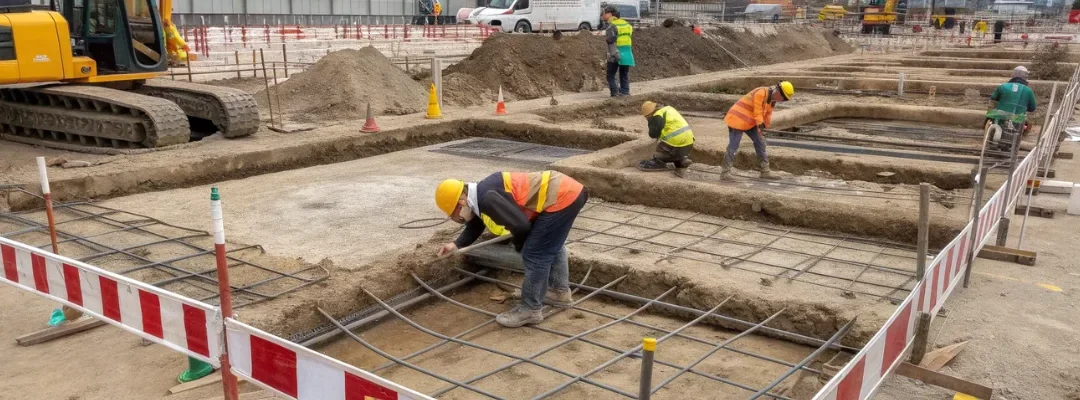The Foundation Beneath It All
When building any structure, the foundation is what holds everything together—literally. While deep foundations are necessary for large, heavy structures or poor soil conditions, shallow foundations are more common, cost-effective, and ideal for residential or low-rise buildings. This guide covers everything you need to know about shallow foundations—from types and construction methods to when and where they’re used.
What Are Shallow Foundations?
Shallow foundations transfer structural loads to the soil at relatively shallow depths, typically less than 3 meters (10 feet). They distribute the weight of a building across a wide area, close to the ground surface.
When Should You Use a Shallow Foundation?
Shallow foundations are ideal when:
- Surface soil has adequate bearing capacity.
- Building loads are relatively light.
- Construction budgets or time are limited.
- There is no risk of extreme soil movement (like landslides or subsidence).
Types of Shallow Foundations
1. Strip Footings
These run continuously under load-bearing walls to spread the load over a larger area.
Best for: Load-bearing masonry walls, simple residential buildings.
2. Spread (Isolated) Footings
Support individual columns and spread the load over a broader area.
Best for: Framed structures with moderate loads.
3. Combined Footings
Support two or more columns with a shared footing slab, especially when space is limited.
Best for: Columns near property lines or uneven load distribution.
4. Raft (Mat) Foundations
A thick, continuous slab covering the entire building area, used when individual footings overlap.
Best for: Weak soils, high load requirements, basements.
Materials Used in Shallow Foundations
- Concrete (reinforced or plain): Most common and versatile
- Masonry: Used in traditional or low-load rural construction
- Steel reinforcement: For added structural integrity in slabs and footings
Construction Process of Shallow Foundations
General Steps:
- Site clearing and leveling
- Excavation to required depth
- Formwork and reinforcement placement
- Pouring and curing concrete
- Backfilling and compaction
Tip: Always conduct a geotechnical soil test before choosing your foundation type.
Advantages of Shallow Foundations
- Cost-effective and faster to construct
- Requires less specialized equipment
- Easier to inspect and maintain
- Ideal for stable, non-expansive soils
Disadvantages of Shallow Foundations
- Not suitable for very heavy loads or poor soil conditions
- Can be affected by frost heave, expansive clay, or waterlogging
- Vulnerable to soil erosion and shrink-swell cycles
Real-World Applications
- Residential homes
- Low-rise office buildings
- Garages and small warehouses
- Temporary structures or sheds
Frequently Asked Questions
Q: What depth qualifies as a shallow foundation?
A: Typically less than 3 meters (10 feet), depending on soil and structure.
Q: Can a raft foundation be used for residential buildings?
A: Yes, especially when dealing with weak soils or where basement slabs are needed.
Q: Is a soil test mandatory?
A: Not legally required in all areas, but highly recommended to avoid future settlement or failure.

